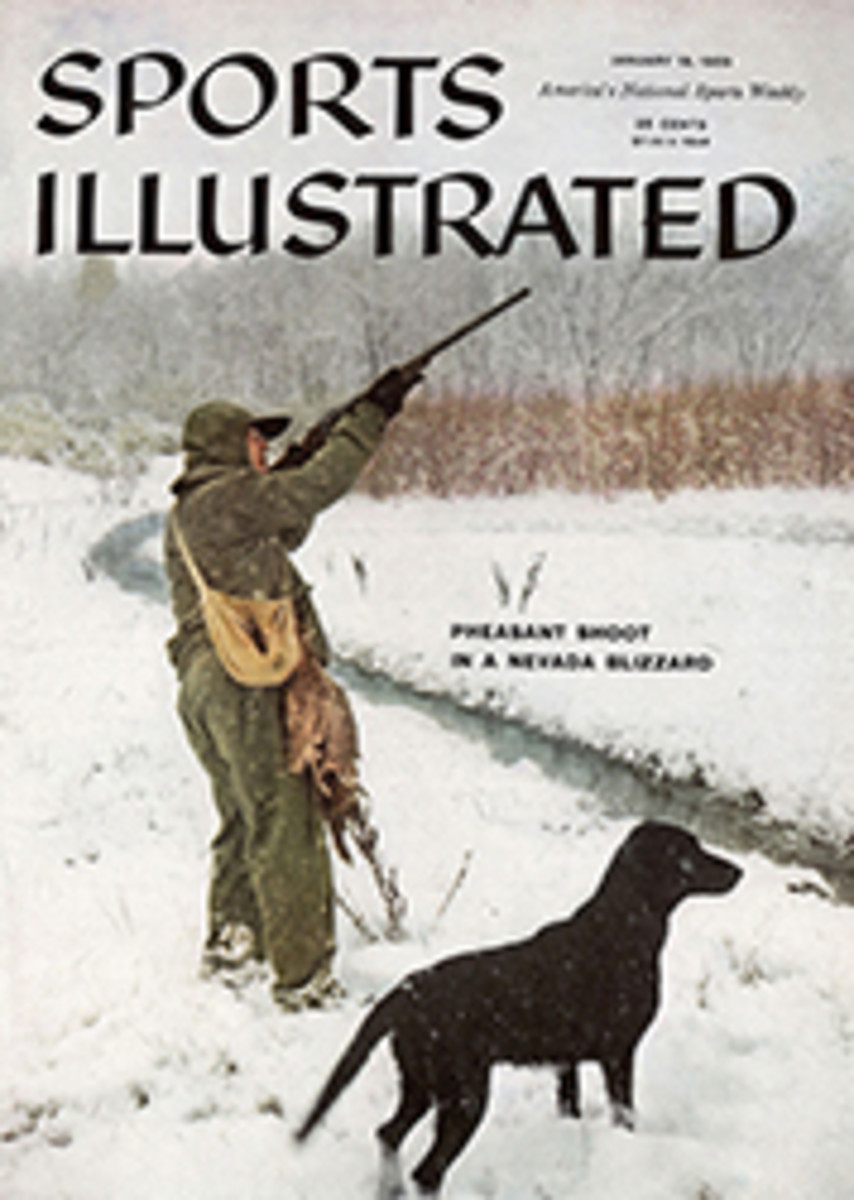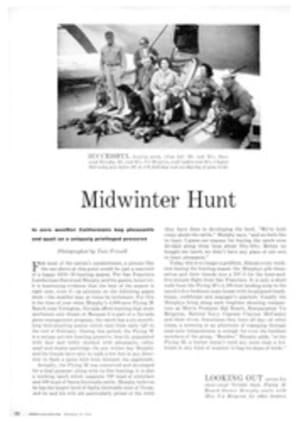
A piece of his pride
It was the final day of the year's first golf open—at Los Angeles' Rancho municipal course. The clouds were scudding in, low and gray, giving promise of the torrential rain which would soak the bone-dry course by nightfall, and Professional Ken Venturi's disposition was as foul as the weather. "I never talk golf before teeing off, and afterward I might not feel like it, either," he snapped to an inquiring newsman.
Afterward, however, it was hard to shut up the ebullient Venturi. For by then he had completed one of the remarkable rounds of tournament golf, the best he himself has ever shot—a hair-raising 63 which brought him from eight strokes off the pace to a two-stroke winner of the L.A. Open and a running start in the chase for 1959's Golfer-of-the-Year bauble.
While the victory was popular with most of the enormous triumphant gallery which stormed in Venturi's wake around the hilly 7,120-yard course, there was at least one galleryite who watched with growing horror as the curly-haired young man drilled home 45-foot putts or slammed two-irons to within 10 inches of the cup and chipped eight-irons dead to the pin on the rare occasions when he missed a green with his woods and long irons. The dismayed spectator was a friend of Golfer Art Wall Jr., who had started the day eight strokes in front of young Venturi but who had slipped a stroke behind when he made the turn after No. 9.
When a final eight-foot birdie putt was dropped by Venturi on the 18th, it was clear that Art Wall, still out on the course, could no longer play a nice, safe lag-putt game and protect his lead. The friend hot footed it off to tell him. The encounter came, fittingly, at the approach to the 13th green, a 500-yard monument of bad luck where Art Wall had just pulled his approach a little to the wrong side of the green. "Art," confided the desperate friend, clutching at the golfer's sweater, "that man is in the clubhouse with a 63. You've got to shoot a 70 to beat him." Since 70 is one under par at Rancho and Art Wall at that precise moment was one over, the news was shattering. "That's just the news I was expecting," snapped Wall bitterly. "That's just swell. Well, I guess it'll make a lot of people happy." He stalked up to the green. "Well," he flung back bitingly, "maybe we can still do something about it. There's still some golf left."
And Wall tried manfully. On the next hole, he slapped an iron shot four and a half feet from the pin and guttily slammed the putt right in the middle of the hole. For a few minutes he was even with Venturi and had only to par in to force a playoff. But his old-fashioned hickory-shafted putter failed him on No. 15, where a four-footer missed by an inch. On No. 16, Wall hit his drive under a tree, forcing him to roll a five-iron up to the green, which hugged the ground all the way like a 100-yard putt, one of the truly brilliant trouble shots of the tournament. Yet No. 17, a 219-yard terror which was birdied by only a handful of golfers throughout the tourney, undid Wall. His tee-shot was short, to the right and down a swale. Wall was sure what he had to do, now: go for the hole. His bold chip shot was drilled for the pin and, when it missed, rocketed past the flag into a virtually unsinkable putt lie.
Wall had to settle for second with 280 to Venturi's 278 and later look on gently while Ken Venturi sat happily in the press room telling the reporters his plans to win the Masters and the National Open and another major tournament or so in the months ahead. He jumped up once when a TV set in the corner began to play back the video tape of his birdie on No. 18. "Bet you 100 to 1 he makes three!" crowed Ken.
Actually, a pair of eagles back to back on Nos. 8 and 9 accounted for Venturi's extraordinary round. Just as a bad shot can infect a whole round like a germ in a body, a pair of good shots can act as a miracle antibiotic; and Venturi's feat of shearing four strokes off par in two holes undoubtedly cured whatever had been troubling his swing. It never occurred to him that throughout the remainder of the round the ball would go anywhere except, in the hole as he duck-waddled from tee to green, playing almost somnambulistic golf. His $5,300 winner's check was added to by a $3,000 bonus from U.S. Rubber, whose golf ball he was playing.
Aside from these very tangible rewards there was another immensely valuable bounty attaching to this victory, as Venturi reminded his locker-room audience. "I'll never forget," he said, "how I was overtaken eight strokes by Jack Burke in the 1956 Masters. The Los Angeles Open gave me back a piece of my pride."
Off in a corner, quietly observing the Venturi victory tableau, Art Wall leaned against a post. Suddenly he spotted his bad-news-bearing informant of the 13th fairway. "Shucks, don't feel bad," he called out. "Somebody was bound to tell me sooner or later. There was just nothing I could do about it." A newsman, auditing the byplay, cut in. "Art," he asked curiously, "how about it? Do the pros want to know exactly how they stand? Or does it put too much pressure on them?"
Wall fastened his eyes steadily on his questioner. "I would rather not know," he answered simply.
PHOTO
BUSS ON CHEEK from wife Conni is Ken's reward, together with checks for $8,300.

